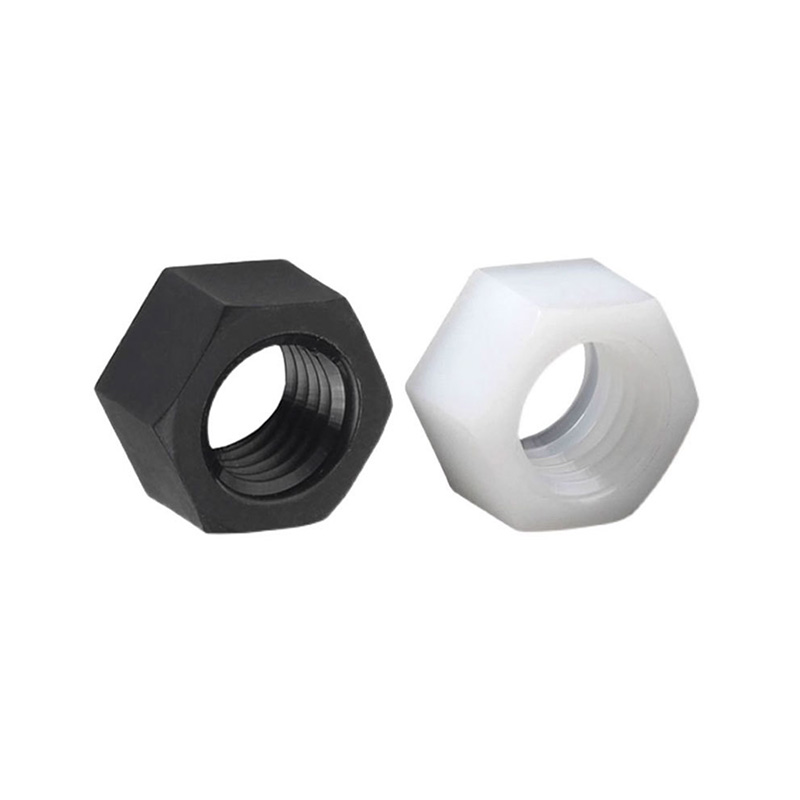Hex nuts are one of the most common types of fasteners, widely used in mechanical assemblies, construction, and automotive applications. While they all share a hexagonal shape designed for wrench tightening, standard hex nuts, heavy hex nuts, and jam nuts differ in dimensions, strength, and intended uses. Understanding these differences is essential for selecting the right fastener for a particular application.
Content
1. Standard Hex Nuts
Description:
Standard hex nuts are the most widely used type of nut. They have a uniform hexagonal shape with standard thickness according to established engineering specifications such as ANSI, ISO, or DIN standards.
Key Features:
- Thickness is proportional to the nominal diameter of the bolt.
- Designed to pair with standard bolts or screws for general fastening needs.
- Provides adequate strength for typical applications under moderate load.
Applications:
Standard hex nuts are used in machinery, household appliances, furniture, and general construction, where moderate clamping force is sufficient.
2. Heavy Hex Nuts
Description:
Heavy hex nuts are larger and thicker than standard hex nuts, providing greater surface contact and strength. The term “heavy” refers to both the increased thickness and slightly larger width across flats compared to standard hex nuts.
Key Features:
- Greater thickness provides higher tensile and shear strength.
- Offers more torque-bearing capacity, reducing the risk of thread stripping.
- Larger width allows the use of bigger wrenches, distributing force more evenly.
Applications:
Heavy hex nuts are commonly used in structural steel construction, heavy machinery, bridges, and industrial equipment, where high loads, vibrations, or structural integrity are critical. They are often paired with heavy hex bolts for high-stress joints.

3. Jam Nuts
Description:
Jam nuts are thinner than standard hex nuts, typically about half the thickness of a standard nut. They are often used in pairs, with one acting as a locking nut to prevent loosening due to vibration or rotation.
Key Features:
- Thin design makes them ideal for tight spaces where a standard nut would not fit.
- When tightened against another nut, they create a jammed locking effect, resisting loosening.
- Can be used alone in low-strength applications but are most effective when paired.
Applications:
Jam nuts are widely used in automotive assemblies, machinery adjustments, and fasteners exposed to vibration. They are particularly useful in situations where a standard nut cannot be applied or where vibration could loosen the main nut.
Comparison Summary
| Type | Thickness/Size | Strength | Main Use | Key Feature |
|---|---|---|---|---|
| Standard Hex Nut | Standard per specs | Moderate | General fastening in machinery and construction | Most common, general-purpose |
| Heavy Hex Nut | Thicker and wider | High | Heavy machinery, structural applications | High load capacity |
| Jam Nut | Thin, about half-thickness | Low to moderate | Vibration locking, tight spaces | Can lock another nut in place |
Conclusion
Choosing between standard hex nuts, heavy hex nuts, and jam nuts depends on the load requirements, space constraints, and environmental conditions of the application. Standard hex nuts are versatile and suitable for everyday fastening, heavy hex nuts provide extra strength for high-load joints, and jam nuts serve as compact locking solutions to prevent loosening. Understanding these differences ensures secure, durable, and reliable fastening in various industrial, automotive, and construction applications.

 English
English 中文简体
中文简体 Español
Español русский
русский عربى
عربى








